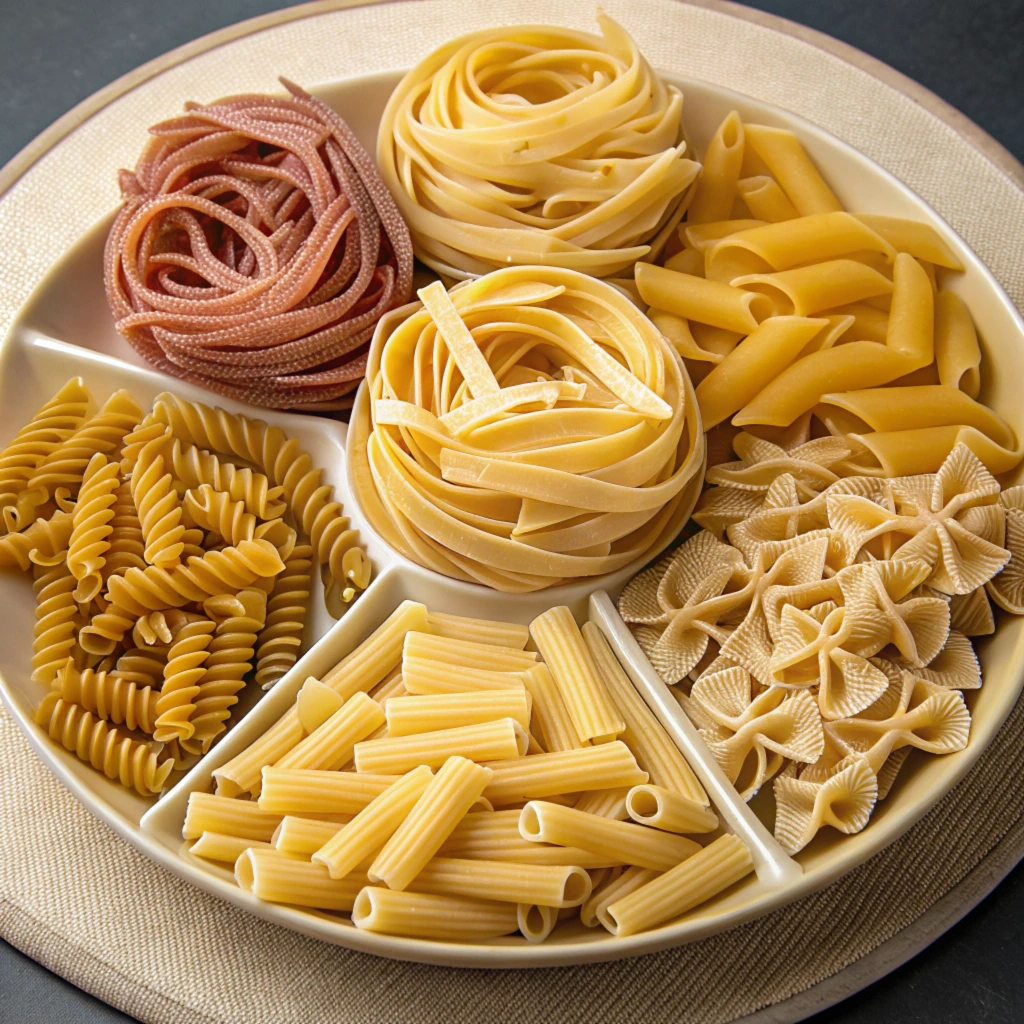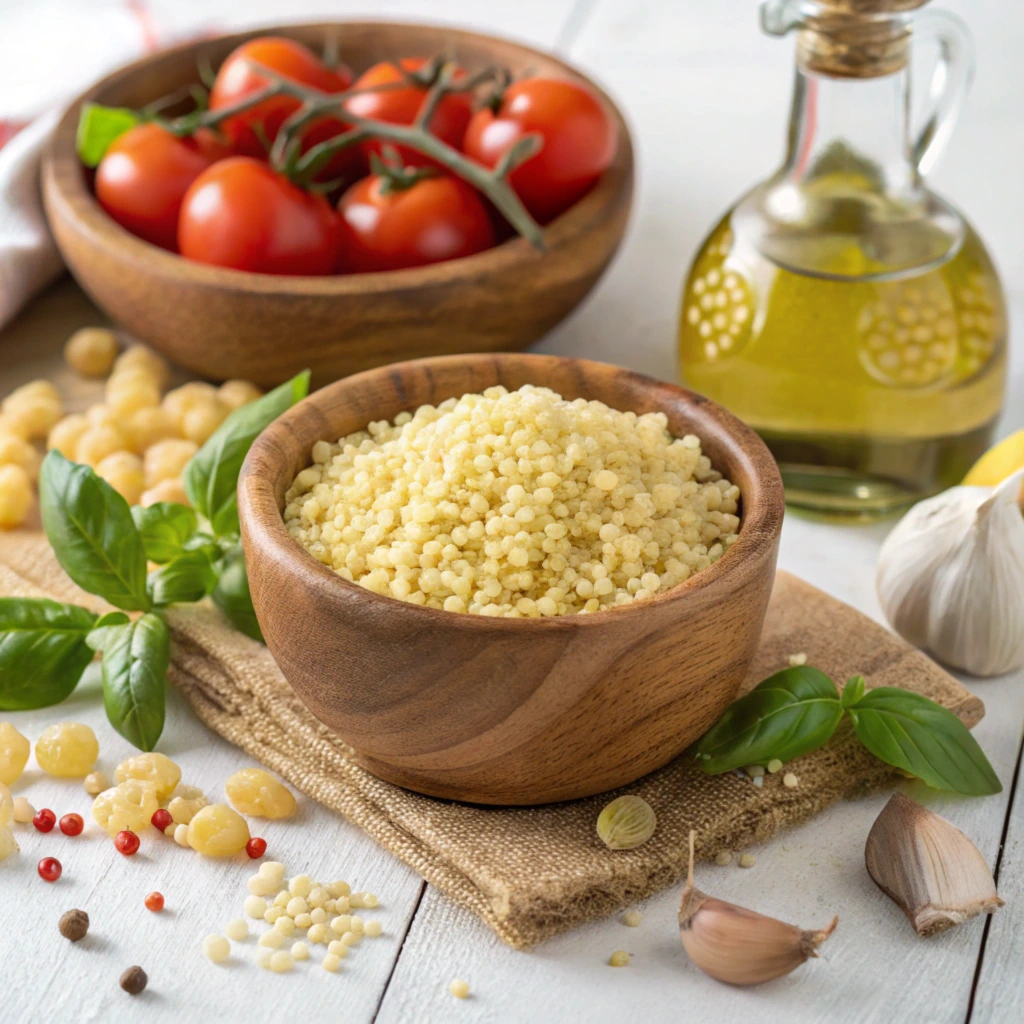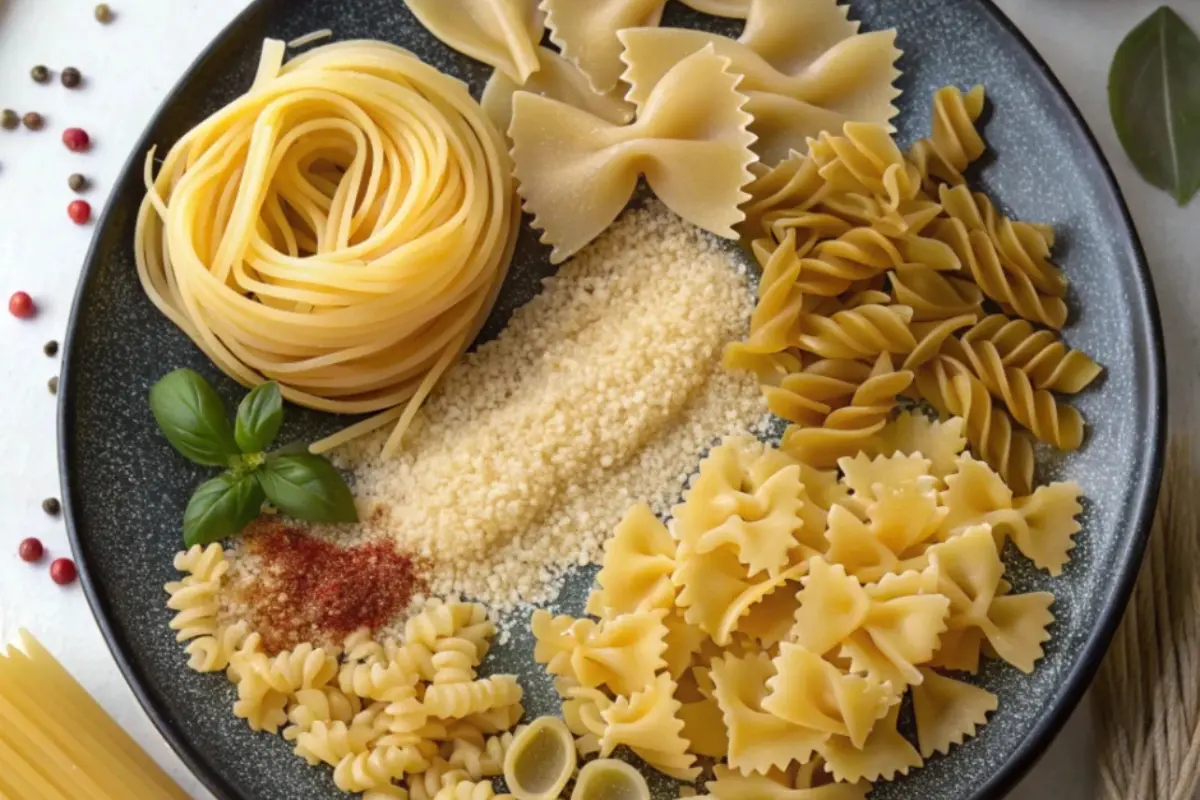When it comes to Italian cuisine, few things are as universally beloved as pasta. But in the midst of the countless varieties of this versatile food, there’s a lesser-known star: pastina. Though they share common roots, these two culinary delights serve very different purposes. In this article, we’ll break down the distinctions between pasta and pastina, exploring their unique characteristics, culinary uses, and more. By the end, you’ll know exactly when to reach for a box of each and how to make the most of these Italian staples.
Understanding Pasta and Its Varieties
What is Pasta? Exploring the Basics of Pasta Types
Pasta is a quintessential staple of Italian cuisine, recognized for its versatility and simplicity. It’s traditionally made from durum wheat and water, forming a dough that’s rolled, shaped, and dried into countless varieties. Its history dates back to ancient civilizations, but Italy truly perfected the craft, turning pasta into a global phenomenon.

There are four primary types of pasta:
- Long pastas like spaghetti and linguine, perfect for sauces that cling.
- Short pastas such as penne and fusilli, ideal for hearty recipes.
- Filled pastas like ravioli and tortellini, stuffed with delicious fillings.
- Specialty shapes including orecchiette or farfalle, designed for specific regional dishes.
Each type is crafted to pair with particular sauces, creating an almost endless range of culinary possibilities.
Culinary Uses of Pasta: A Versatile Staple in Italian Cuisine
Pasta is a canvas for creativity. Whether it’s a simple spaghetti aglio e olio or a rich lasagna layered with béchamel, pasta adapts beautifully to both traditional and modern cooking styles.
In Italian cuisine, pasta is often celebrated for its ability to:
- Highlight regional flavors: Think pesto in Genoa or tomato-based ragù in Bologna.
- Serve as a comfort food: Dishes like mac and cheese or baked ziti are loved worldwide.
- Enhance presentation: Unique shapes like rigatoni can elevate the visual appeal of a dish.
Moreover, pasta is a cornerstone of gluten-free and whole-grain innovations, making it accessible to a broader audience.
With its countless varieties, pasta serves as a foundation for culinary exploration. From traditional Italian dishes to innovative fusions, it continues to hold a special place in kitchens around the world. Let’s now turn our attention to its smaller, charming cousin: pastina.
Exploring Pastina: The Tiny Pasta
What is Pastina? The Smallest Member of the Pasta Family
Pastina translates to “little pasta,” and it’s exactly that—tiny, delicate shapes of pasta often used in comfort foods. Unlike its larger relatives, pastina comes in miniature forms like stars, beads (acini di pepe), or grains. Its roots trace back to traditional Italian kitchens, where it became a favorite for soups, broths, and quick meals.
What sets pastina apart is its size and shape, making it ideal for dishes requiring soft textures and quick cooking. While larger pasta might steal the spotlight at a fancy dinner, pastina is the unsung hero in humble, homey meals.
Common Uses of Pastina in Cooking
Pastina shines in simple recipes where its small size creates a comforting, creamy texture. It’s a go-to ingredient for:
- Soups: Added to chicken broth or vegetable soups, it absorbs flavors beautifully.
- Baby food: Its soft, mushy texture is perfect for young eaters.
- Quick meals: Cooked in milk or broth and topped with butter, cheese, or herbs, pastina is the ultimate one-bowl meal.
Additionally, pastina is often used as a thickener in stews or casseroles. Its versatility makes it a beloved staple for families, especially during colder months when comfort food takes center stage.

Key Differences Between Pasta and Pastina
Size and Shape
The most obvious difference between pasta and pastina is their size. Pasta includes a vast range of shapes, from long strands like spaghetti to chunky pieces like rigatoni. In contrast, pastina is always tin, typically no larger than a few millimeters.
While pasta’s size can dramatically alter the eating experience, pastina’s petite forms are all about uniformity, creating a consistent texture that’s soothing and easy to eat.
Cooking Methods and Times
Another major distinction lies in preparation. Traditional pasta requires ample boiling time—up to 12 minutes or more, depending on the shape. Pastina, on the other hand, cooks in just a few minutes, making it a favorite for quick meals.
Furthermore, pastina often cooks directly in broths or sauces, eliminating the need for separate boiling. This not only enhances its flavor but also streamlines the cooking process, a boon for busy home chefs.
Flavor and Texture
The flavor of both pasta and pastina comes from their basic ingredients, but their texture varies significantly. Pasta’s size allows for a chewy, al dente bite that works well with hearty sauces. In contrast, pastina tends to become soft and velvety, ideal for creating creamy or broth-based dishes.
Culinary Applications
When it comes to versatility, pasta and pastina each have their sweet spots. Pasta is ideal for robust dishes like spaghetti carbonara or baked ziti, while pastina excels in simpler meals, offering a lighter and more comforting touch.
For instance:
- Use pasta when you want a dish to take center stage.
- Choose pastina for sides, soups, or recipes that need a quick, gentle starch.
By understanding these differences, you’ll know when to use each, ensuring your recipes always turn out just right.
Nutritional Comparison
Nutritional Profiles of Pasta and Pastina
When it comes to nutrition, both pasta and pastina share similar foundational ingredients, but their differences in size and usage can influence their role in a balanced diet. Pasta is often served in larger portions and tends to be paired with rich sauces, which can significantly increase calorie and fat content. On the other hand, pastina is typically used in lighter meals, like broths or simple dishes, making it a lower-calorie option per serving.
For instance:
- A standard serving of dry pasta (2 ounces) provides about 200 calories, 1 gram of fat, and 7 grams of protein.
- A comparable serving of pastina is similar in calories but is often consumed in smaller quantities due to its compact size and filling nature.
Both are excellent sources of carbohydrates, making them great energy boosters, but portion control is key. Whether you choose pasta or pastina, pairing them with lean proteins and vegetables ensures a healthier meal.
Serving Suggestions for Balanced Meals
To maintain a balanced diet, consider these tips:
- Pair pasta with olive oil-based sauces, fresh herbs, and lean proteins like grilled chicken or shrimp.
- Use pastina in brothy soups loaded with vegetables for a low-calorie, satisfying meal.
For more delicious ideas on how to prepare pastina, check out the Pastina Soup Recipe.
Cultural Significance and Popularity
The Role of Pasta in Italian Cuisine
Pasta is not just food; it’s a symbol of Italian heritage and tradition. From festive gatherings to casual family dinners, pasta holds a central place on the Italian table. Each region has its own pasta specialties, reflecting local ingredients and customs. For example, spaghetti alla carbonara hails from Rome, while orecchiette is a beloved dish from Puglia.
The versatility of pasta has also contributed to its global popularity, allowing it to adapt to various cuisines worldwide. From creamy Alfredo in the U.S. to spicy arrabbiata in Italy, pasta’s ability to transform with flavors is unmatched.
Why Pastina is a Household Staple
On the other hand, pastina carries a more intimate, familial significance. Often associated with comfort food, it’s a dish that many Italians remember from childhood. Traditionally served to children or those feeling unwell, pastina is seen as nurturing and wholesome.
While less commonly featured in restaurant menus, pastina remains a pantry staple for families. Its quick cooking time and versatile nature make it a convenient and comforting option for busy households.
For more insight into why pastina is so beloved, check out the article What is So Special About Pastina?.
FAQs About Pasta and Pastina
What Makes Pastina Unique Compared to Pasta?
While pasta is versatile and comes in numerous shapes and sizes, pastina stands out because of its tiny, delicate form. Its compact size allows it to cook quickly, making it perfect for soups, porridges, or light meals. Unlike traditional pasta, which often takes center stage in elaborate dishes, pastina is more of a comfort food staple, frequently used for quick and soothing meals.
The ease of preparation and its soft texture make it particularly appealing for children, the elderly, or anyone craving a warm, simple dish.
Can You Substitute Pasta for Pastina?
Yes, but with some caveats. While larger pasta types can replace pastina in recipes, the texture and cooking time will differ significantly. For instance, if you’re making a broth-based soup, substituting pastina with spaghetti or penne may result in a less cohesive dish. Similarly, using pastina in place of traditional pasta in hearty dishes like lasagna would not work due to its small size.
When swapping one for the other, consider the recipe’s intended texture and flavor. If you’re unsure, stick to recipes that are specifically designed for either pasta or pastina.
What Are the Best Recipes for Pastina?
Some classic recipes highlight the versatility of pastina:
- Pastina in Broth: A simple dish combining pastina, chicken or vegetable broth, and a pat of butter or drizzle of olive oil.
- Pastina with Cheese: Cooked pastina mixed with milk and Parmesan for a creamy, risotto-like consistency.
- Pastina with Egg: Often called “Italian egg drop soup,” this recipe involves whisking an egg into hot broth with cooked pastina for a protein-packed meal.
For a detailed recipe, check out Pastina Soup Recipe.
Conclusion
Understanding the differences between pasta and pastina is key to mastering Italian cooking and making the right choice for every recipe. While both belong to the same culinary family, their uses, textures, and appeal differ significantly, shaping how they fit into various dishes. By appreciating these distinctions, you’ll be able to elevate your cooking and enjoy the unique benefits of each.
Embracing the Versatility of Pasta
Pasta, in its many forms, is the epitome of versatility in the kitchen. From long strands like spaghetti to short shapes like penne, each type has a purpose. For instance, tubular pastas work best with chunky, meat-based sauces, while thin, flat noodles pair well with delicate, oil-based sauces. This flexibility allows pasta to star in countless dishes, whether it’s a hearty baked ziti or a light, refreshing primavera.
Moreover, pasta can be a vehicle for culinary experimentation. Adding global flavors like teriyaki for an Asian-inspired fusion or using it as a base for a spicy Cajun pasta dish highlights its adaptability. Beyond flavor, pasta is also an ideal choice for varying dietary needs, with whole-grain, gluten-free, and even vegetable-based options widely available.
To truly harness the power of pasta, always pair the shape with a complementary sauce and preparation style. This simple practice can turn a basic dish into a gourmet masterpiece.
The Comfort and Simplicity of Pastina
Pastina offers a completely different charm. Its petite size and fast cooking time make it the perfect choice for quick, nourishing meals. One of its most beloved roles is as a comfort food, often prepared with minimal ingredients to create dishes that are soothing and satisfying.
Because of its tender, creamy texture when cooked, pastina is ideal for:
- Healing Meals: Served to those recovering from illness, often in a simple broth.
- Children’s Dishes: A go-to meal for picky eaters or young children due to its soft texture and mild flavor.
- Everyday Simplicity: Perfect for busy days when time is short, yet comfort is needed.
The small size of pastina also lends itself well to thickening soups or serving as a base for casseroles. With just a few pantry staples like butter, cheese, and seasonings, it transforms into a dish that feels indulgent while remaining wonderfully uncomplicated.
Culinary Pairings: When to Choose Pasta or Pastina
Knowing when to use pasta versus pastina is essential for getting the most out of these ingredients. While pasta can act as the star of the plate, paired with robust sauces and proteins, pastina works best as a supporting element in lighter, simpler dishes.
For instance:
- Choose pasta when serving a large crowd, as it offers variety and the ability to hold heavier sauces.
- Opt for pastina for quiet family dinners or when making something warm and comforting, like a classic chicken soup.
This thoughtful approach to ingredient selection can make all the difference in your cooking.
Honoring Their Shared Heritage
Though pasta and pastina serve different culinary purposes, they share a rich heritage rooted in Italian cuisine. Both are made from similar ingredients, embodying the ingenuity and tradition of Italian cooking. This shared lineage also means they complement one another beautifully, often appearing together in multi-course Italian meals.
Whether you’re preparing a formal feast or a casual weeknight dinner, both pasta and pastina deserve a place in your repertoire. Their unique qualities allow you to explore a world of flavors while staying true to the comforting essence of Italian cooking.
By understanding and embracing the differences between pasta and pastina, you can take your cooking to the next level. Whether you’re serving a rich, saucy bowl of spaghetti or a delicate, nourishing pastina soup, the possibilities are endless. Both bring joy and flavor to the table, making them staples worth celebrating in any kitchen.

